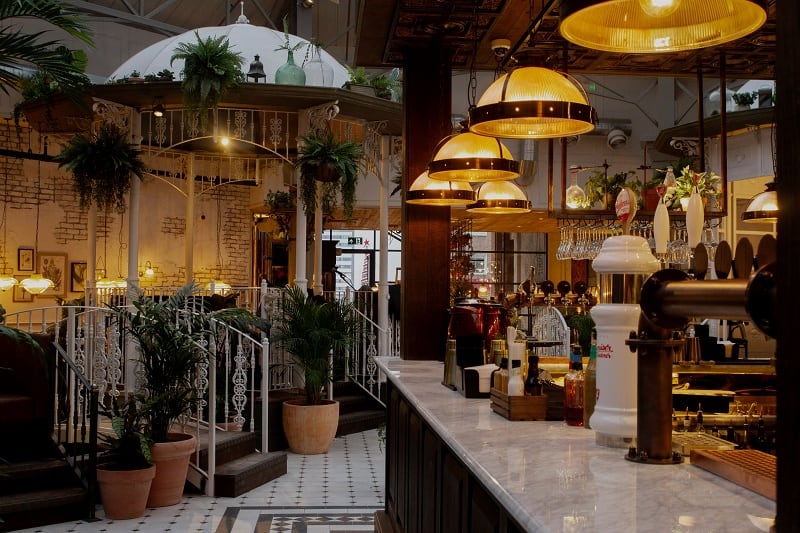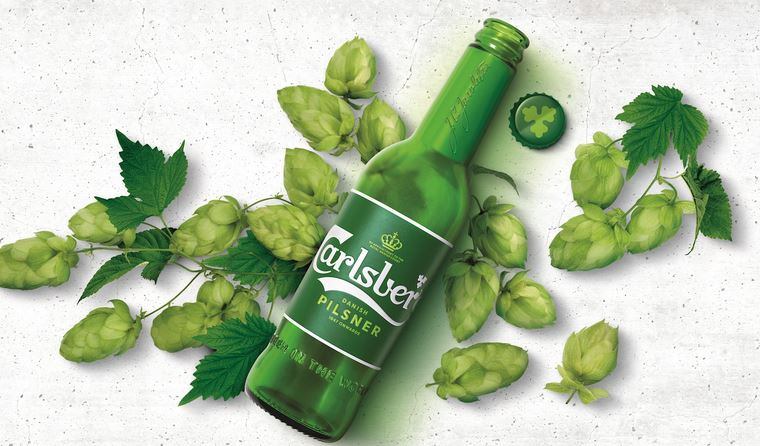This spring, the sixth edition of the Portman Group’s code of practice will be published, with some additional guidelines to address areas such as sexism in marketing and implications that alcohol can improve mood, expected to be included.
Introduced in 1996 to ensure alcohol is named, packaged and promoted responsibly, the code has drawn its critics from some parts of the industry, who have found it overly restrictive, while others outside the industry believe that its regulatory, rather than compulsory nature, does not go far enough in tackling problems associated with alcohol.
Alongside the Portman Group’s code of practice are the AdvertisingStandards Authority’s (ASA) Committee of Advertising Practice (CAP) code and Broadcast Committee of Advertising Practice code giving specific guidance on how alcohol can be marketed and advertised through any form of communication to consumers – from a full page advert in a glossy magazine to a 60-second ad on TV.
Since these codes were introduced, the advertising and marketing landscape for anyone involved in the sale of alcohol has dramatically altered. The list suggesting what you cannot say, or even imply when promoting a bottle of booze is a long one, and navigating the guidance can seem like yet another burden on an already struggling industry, although it is generally accepted that this has helped stimulate creativity.

Nevertheless, for many like Jim Shearer, marketing and consumer excellence director at Molson Coors Brewing Company, adhering to codes are simply part of the territory if you’re involved in selling alcoholic beverages.
“We believe in the responsible marketing of alcohol to adults and embrace the Portman Group and ASA codes, as well as the global alcohol industry Digital Guiding Principles and our own commercial code,” he says.
“We don’t see them as restrictions as such – just a part of the way we do business.”
Dan Hooper, director of client services at alcohol marketing agency YesMore, has worked with both alcohol brands and the Portman Group. Like Shearer, he regards the regulations as a framework for brands to work within and, importantly, an attempt at addressing societal problems such as underage, or binge drinking.
“The Portman Group and the ASA aren’t here to ruin everyone’s good time, they are literally trying to do a good job of influencing a healthy drinking culture in the UK,” he says.
“I don’t ever think they’re trying to ruin anyone’s brand or water down anything they’re trying to do. I think people just need to potentially think things through.
"There’s a way of being cheeky and funny and witty without having to resort to non-approved language.”
It is this last point that rings true with many involved in drinks marketing. Regulation hasn’t necessarily meant restriction and in some ways has led drinks brands and pubs to seek out creative ways to get their brand or business noticed.
Embracing change
Indeed, the trade had embraced the Portman Group’s code of practice so well that by 2010, only five complaints regarding irresponsible alcohol advertising were made to the watchdog, with just two upheld by the group’s independent panel.
Molson Coors’ Shearer believes the ‘digital revolution’ enabled the industry to become creative in its marketing approach once again because age restrictions meant promotions could directly target the over-18s.
“The rise of social media and video on-demand over the past decade or so has made it easier for drinks producers to market specifically to an over-18s audience,” he says.
“That ability to be so tailored has allowed the industry to fully embrace the regulations, while reaching an adult consumer in a creative and engaging way.”
Hooper believes the arrival of social media was the real defining moment in marketing for pubs because it suddenly gave them an easy access route to people outside their doors.
“Before social media, a pub didn’t have too many ways of having its voice heard. If it wanted to advertise a certain drink it stocked, a themed night or a drinks promotion, other than spending a lot on a print campaign, there wasn’t any way they could reach thousands,” he says.
“The advent of social media really changed what they could do and what they said. Even if you were the smallest pub in London and had a zero budget, the advent of social media meant that suddenly you had a voice and could reach people all over.”
Rather like the Wild West
As Hooper points out, however, the new social media frontier was a little like the Wild West when it was first introduced, leaving pubs and drinks brands free to share content that would not comply with the ASA’s or Portman’s guidelines if it had been on TV or in print.
“When it arrived, the ASA were sort of looking away,” he continues. “I liken it to a house party when the parents weren’t around”. The ASA and Portman Group soon returned home, however, and set some new ground rules. In 2009, the Portman Group published its guide The Responsible Marketing of Alcoholic Drinks in Digital Media, advising companies how to stay within its and the CAP’s codes, meaning social media would be subjected to the same guidelines as those for other media.
Having strict rules on drinks marketing across all platforms hasn’t helped with the fact that pubs are struggling to attract customers and are closing at the rate of 18 a week according to the latest figures from the Campaign for Real Ale (CAMRA). Nevertheless, those who work in advertising and marketing don’t believe that the rules and regulations enforced by the Portman Group or the ASA are to blame for pub closures.
“It’s the culture that has shifted the use of the pub, not Portman or the ASA,” says Hooper. “When I talk to my dad, who’s in his 60s, about what the pub was like then, he describes it as a very different place to how I know it now and it was different for his father, so it’s something that shifts generationally.
Culturally, people aren’t going down the pub as much as they were and just aren’t drinking the same amount of alcohol. Taxes have made drinks less affordable too, so it’s not marketing as such, it’s that the way the pub is used that has changed.”

New attitude to drinking
According to stats from Red Brick Road, almost a quarter of Generation Z (those born between the mid-1990s and the early 2000s) identify as teetotal and 70% regard binge drinking as ‘very risky’. Therefore, marketing campaigns with alcohol at their centre may not be the best way to go. “When I’m speaking to Generation Z, they are genuinely not interested in alcohol, they think getting drunk is stupid, unhealthy and looks embarrassing,” says Hooper.
Amit Patel, lead strategist at TBWA London, which has created advertising campaigns for Pernod Ricard brands for more than 25 years, believes we are currently at a ‘defining moment in pub marketing’ and challenges the industry to reposition itself to attract customers now and in the future.
“With 18 pubs a week closing in 2018, we desperately need a pivot that can address the pub’s declining relevance, particularly with younger generations,” he asserts. “To combat the fact that people are either staying at home where entertainment is at their fingertips – think: Netflix – or opting to spend time in different environments like casual dining, the great British pub needs to reposition itself as something more than just a boozer, they need to rethink what they are, and what they provide beyond drinks and a place to sit.”
Patel says the ‘key switch’ in marketing strategy to attract more customers lies in ‘transforming the customer experience’ rather than finding ways to make people drink more alcohol. He believes giving customers access to experiences they would not be able to get anywhere other than in the pub is one strategy and making it about a welcoming meeting space is another.
“Airbnb could have been just another accommodation provider but it remained true to the value it adds and positioned itself as a service that will allow people to really know what it feels like to live in their holiday destination,” he explains. “Pubs similarly need to redefine their role in society and return to being a much-needed force for good that brings people together.”
Learning from tobacco
Ben Barton, business director at creative agency Space, agrees, while also suggesting that pubs learn from the tobacco industry, which is no longer permitted to communicate directly with customers. Instead, many tobacco companies have developed retailer engagement programmes to help switch existing adult smokers to their brands by converting retailers into brand advocates.
He says: “As legislation tightens and advertising becomes more restrictive, pubs must shift their focus and find new ways of influencing customers. There are a number of ways to do this – recently, for example, there’s been a growth in engagement between bar owners and outlet staff. With a high percentage of drinks choices being made at the point of purchase, the role of the bar staff is becoming more and more important in driving brand advocacy.”
Focusing more on brand recommendations and the unique experience a pub can provide, rather than making it about a place to drink, could not only help the pub sector’s future, but could also avoid further marketing and advertising regulations being introduced, or being subject to legislation, Barton believes.
“Given the direction the UK market is heading, I wouldn’t be surprised if we start to mirror countries like France and introduce something similar to ‘The Evin Law’ – where content of ads is restricted and only brand assets such as logos are allowed,” he says, recommending that pub and drinks brands invest in ‘brand assets’ now to ensure messaging is clear should this happen.
“Before communication legislation tightens, [businesses] need to be imbued with the desired positioning and image that the brand wants to project. It’s also important to develop robust social and brand ambassador strategies to ensure a brand stays front of mind,” he concludes.




